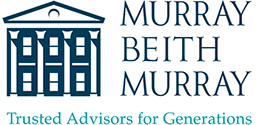Trust Registration Service – what you need to know
The Trust Registration Service (TRS) is an online system which was introduced by HMRC in 2017 to increase transparency around the ownership of trust assets. At the time, there was a requirement to register and provide information about certain trusts on the TRS. Generally, this only applied to trusts with UK tax liabilities. New rules, however, were introduced on 6 October 2020 which significantly extended the scope of the TRS. Now, almost all trusts which have been expressly set up and have UK connections must be registered, even if they have no UK tax liabilities. With the 2022 deadline for registration fast approaching, this article sums up what you need to know about TRS.
Who is responsible for updating the register of trusts?
The responsibility for registering the trust lies with its trustees. They also need to ensure that the information they provide is kept up-to-date. Where the trust has UK tax liabilities, the trustees must update the information annually, or at least confirm that there are no changes.
Which trusts need to be registered?
The following categories of trusts must be registered:
1. UK express trusts (i.e. those created deliberately) unless they are otherwise excluded;
2. Non-UK express trusts with relevant UK connections, including trusts with UK assets, interests in UK land or those with at least one UK-resident trustee and certain business relations; and
3. All trusts with UK tax liability.
Trusts which do not need to be registered include charitable trusts and trusts used to hold assets of a UK registered pension scheme.
What information needs to be provided on the register?
Trustees must provide information about the trust itself, trust assets and the value of these. They also need to give details of those associated with the trust including the settlors (i.e. those who create the trust), the trustees and beneficiaries.
Is the information on the register made public?
No, the information held on TRS is not publicly accessible.
What are the deadlines?
|
|
On or before 1 September 2022 |
|
For trusts created after 6 October 2020 |
Within 90 days of being created or otherwise becoming registerable or by 1 September 2022 (whichever is later) |
Non-taxable trusts set up on or after 6 October 2020 but wound up before 1 September 2021 still need to be registered.
What if there are changes to the trust over time?
If there are changes to the details of the trust or those associated with it, the register must be updated within 90 days.
What happens if the trustees fail to register the trust?
As you might expect, there are penalties for late registration or failure to comply.
Your Trust at Murray Beith Murray
Our dedicated team will look after your trust and help trustees comply with their responsibilities.
The trust registration service we offer for your trust includes:-
a) Reviewing the trust structure and assets to establish whether registration is required;
b) Preparing and submitting information to HMRC as part of the trust register reporting for your trust; and
c) Maintaining the register on a regular basis, on being notified of any changes by the trustees or by persons nominated in writing by the trustees.
Return to the Trusts Expertise page.
To find out more about Your Trust at Murray Beith Murray
If you would like to learn more about how Murray Beith Murray can look after your trust, and areas of expertise, please complete our contact form or call us on 0131 225 1200.
Murray Beith Murray was established in 1849, as advisors for generations of clients, committed to our values of integrity, expertise and trust. This aim and these values continue to this day, as does our commitment to be here when you need us.


